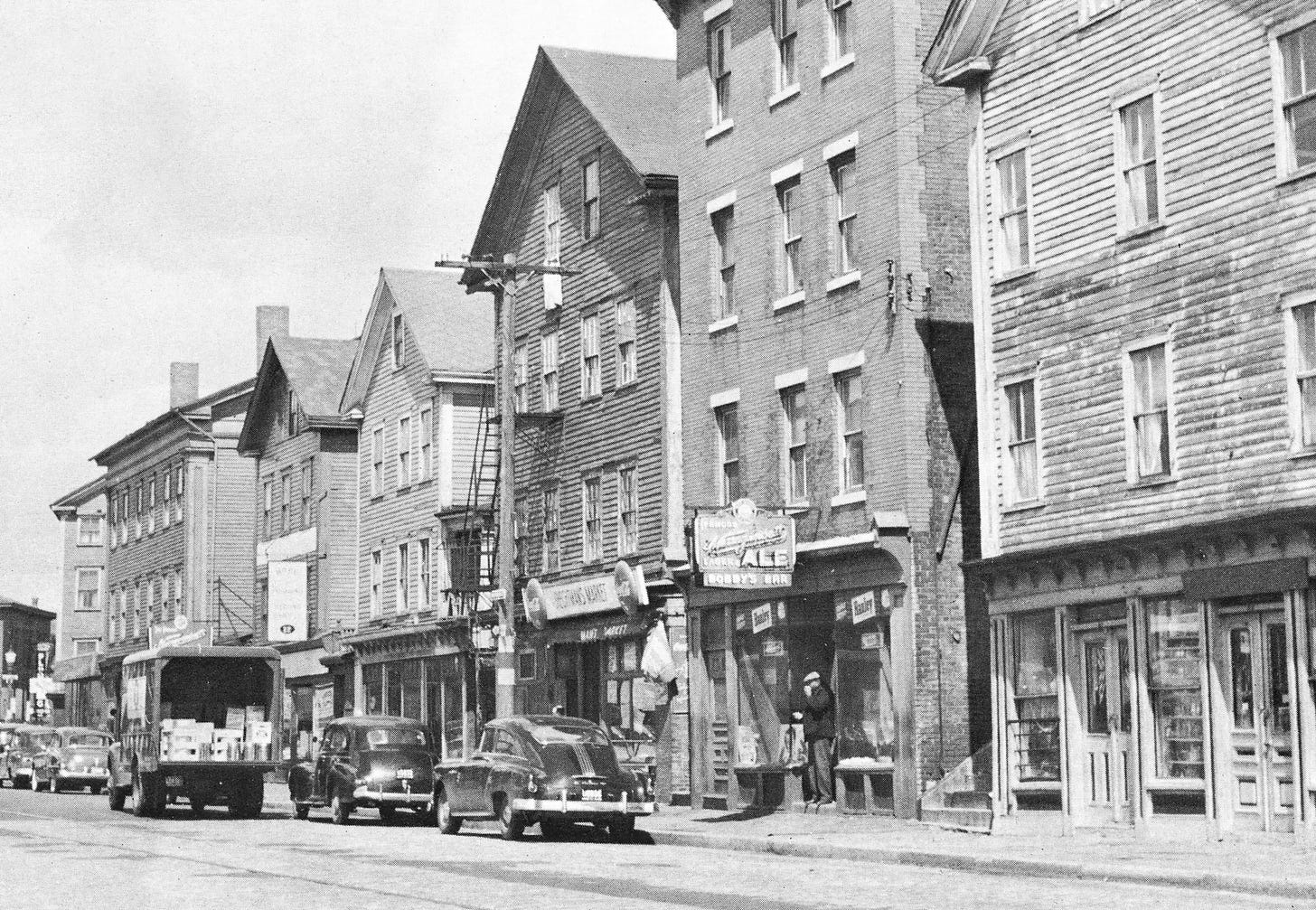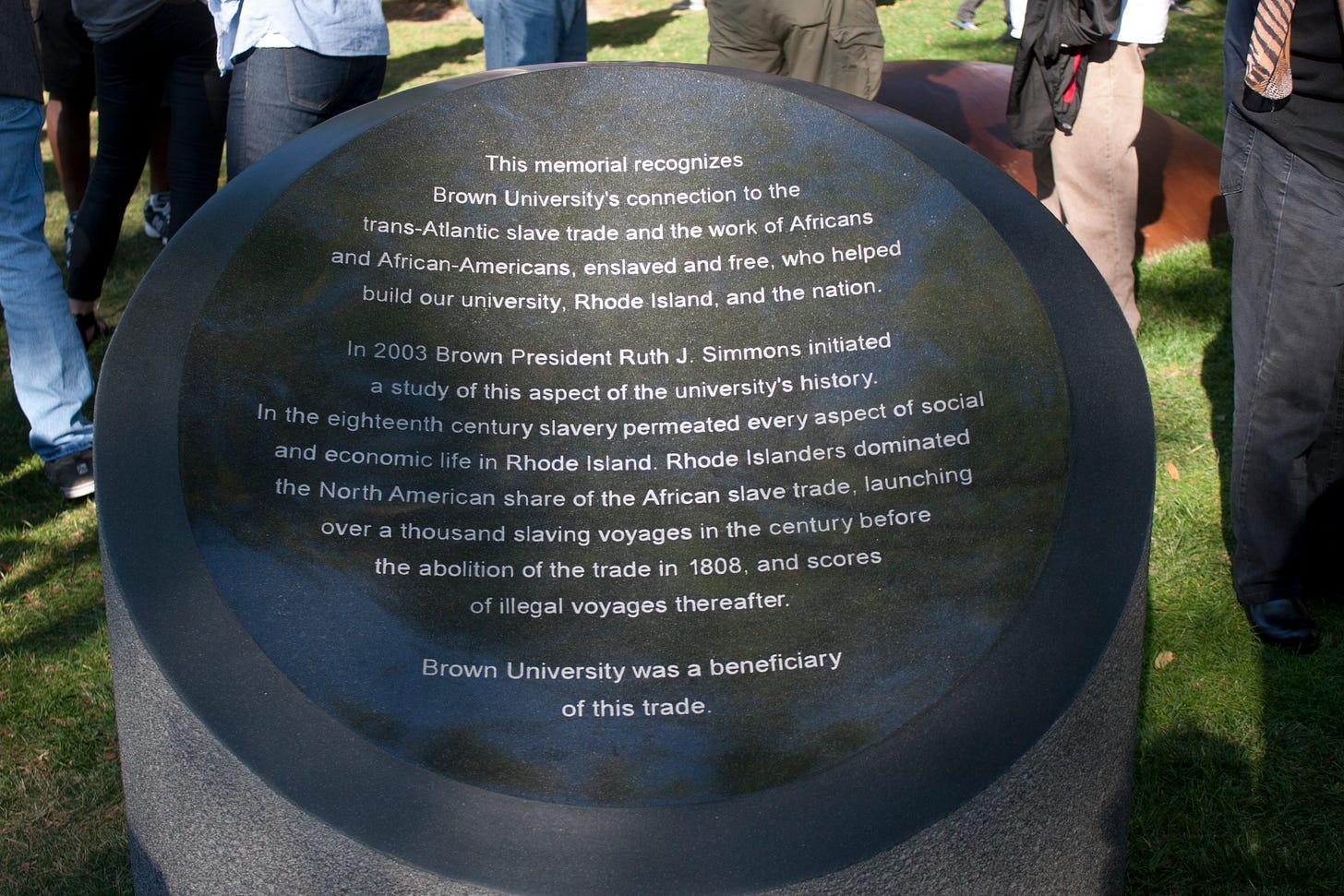Circling back
After a half century, Providence has changed, but it still feels like home to me.

I stood outside the simple wood-frame house at 55 Thayer Street, noting the fresh paint and new historical plaque. Commemorating the residence of a Wheaton Bowen in 1817–1842, it omits the Sunshine family, who lived there more than a century later. I trolled for memories, but all that surfaced were disconnected mental snapshots with nothing to fill in the space around them. I pictured my mother opening the back door to call me to lunch, typically canned soup. I recalled playing with Sarah, the child next door, in the weedy backyard space between our houses, now prettily landscaped with a trellis and a tiny burbling fountain.

I lived in this house in Providence, Rhode Island, until the age of six. In 1959, after my brother was born, we moved to a larger house on Bowen Street, a mile away. I left in 1971 for college and never returned, except on brief family visits. In 2005 my father moved to Ohio, severing my last tie to Rhode Island.
Is there anything new to say about returning to one’s childhood home, taking note of the changes, and sifting through the emotions that ensue? Probably not. But while the nostalgia tour may be a cliché, it’s also something that many of us have done, or will do, in our third age of life. And so in early September Bill and I spent a day in Providence on our road trip from DC to Maine and back to celebrate Bill’s 80th birthday.

We rented an Airbnb a few blocks from 55 Thayer, in Fox Point, a waterfront neighborhood on the city’s East Side. In the 1950s Fox Point was a tight-knit, working-class immigrant enclave, a center of Portuguese and Cape Verdean culture in New England. But no more: Brown University has eaten the neighborhood, along with much of the East Side and parts of downtown. Gentrifiers and students occupy the old colonial homes, and upscale restaurants (some very good) line the narrow streets. Fox Point still has some Portuguese-speaking residents, from Portugal, the Azores, Cape Verde, and Brazil. But the bustling immigrant community of the mid-twentieth century has moved away, aged, died.

Cities change. Nothing stands still. In the 1950s and ’60s, when I was growing up there, Providence was inhabited mainly by Irish, Italian, and Portuguese immigrants and their descendants who came to work in the textile, jewelry, and silverware industries. There were also the Yankees, the "other" Providence (and in their minds the only Providence). They controlled the Hospital Trust Bank, Brown University, the Providence Journal, Rhode Island Hospital, the Hope Club, the Art Club, Roger Williams Park, and most of the East Side. So far as they were concerned, the immigrants could have the rest, including the General Assembly. There were exceptions, of course, where the two populations would meet and meld. (Thanks to my father Jim Sunshine, retired Providence Journal editor, for this recollection.)
Today the largest foreign-born group is from the Dominican Republic, and Latinos, also including many Guatemalans and Colombians, make up more than 40 percent of the city’s population. The industrial base has given way to an economy anchored by health care and higher education, including eight colleges and universities. Walking along South Main Street, Bill and I looked across the Providence River to the old Jewelry District, now home to the gleaming new campus of the Brown University Medical School.
Brown’s metastasis is everywhere apparent. Thayer Street in the 1950s was a collection of modest storefronts catering to local residents. My family got groceries from Thayer Market, prescriptions from E. P. Anthony pharmacy, Chinese food from Toy Sun, and haircuts from Alba-Runci barber shop. The Merry-Go-Round toy shop was the source of most birthday presents given and received. On Saturday mornings I would pedal my bike to Liggett’s Drug and stock up on candy. Today the street is transformed, patrolled by boisterous crowds of students who patronize the chain stores and restaurants that have taken over the commercial strip. Thayer Market is now a CVS; Anthony’s is a Chipotle. The Merry-Go-Round became Dojo Smoke Shop, although that has apparently closed. The corner space where Liggett’s used to stand houses a Greek restaurant, Andrea’s. Bill and I had dinner at one of their sidewalk tables as cars, motorcycles, and skateboards whizzed by.

But Brown, while expanding, is also changing. The Ivy League university is named for the Brown family, several of whose members, notably John Brown, were up to their eyebrows in the transatlantic slave trade. Much of the wealth that endowed the university derived in some way from this trade. In 2001 the university appointed its first African American president, Ruth J. Simmons, and in 2006, under her leadership, Brown released a Slavery and Justice Report documenting the university’s historical involvement with the slave trade as well as modern manifestations of racism.
The Brown quad, where I used to play, now has a cast-iron Slavery Memorial by sculptor Martin Puryear. Next to it stands a granite plinth with engraved text that reads:
This memorial recognizes Brown University’s connection to the trans-Atlantic slave trade and the work of Africans and African-Americans, enslaved and free, who helped build our university, Rhode Island, and the nation. … In the eighteenth century slavery permeated every aspect of social and economic life in Rhode Island. Rhode Islanders dominated the North American share of the African slave trade, launching over a thousand slaving voyages in the century before the abolition of the trade in 1808, and scores of illegal voyages thereafter. Brown University was a beneficiary of this trade.
So, 300 years later, a public acknowledgment, as well as a continuing institutional process of investigation and self-reflection. An expanded Slavery and Justice Report was released in 2021, and Brown also established the Center for the Study of Slavery and Justice, headed by Africana studies professor and progressive activist Tony Bogues. Things do change, albeit slowly and with a long way to go.
But as Bill and I made our way to Bowen Street and from there to Thayer and Williams, lingering in front of my two childhood homes, what struck me was not the changes but the familiarity. I lived in Providence for only the first 18 years of my life. I’ve lived in DC, in Mt. Pleasant, for more than 40 years, yet Providence is home in a way that DC will never be.
There’s the Providence Athenaeum, where my mother worked as a librarian for the last decade of her life. There’s the block of Cushing Street where my kindergarten teacher, Miss Anderson, lived. There’s the brick wall, running the length of the block, that separated our Bowen Street house from Pembroke (then the women’s college linked to Brown University, which of course was just for men). I would climb to the top of the wall from our backyard and crawl along it, hiding in its tree-shrouded nooks. There’s Prospect Terrace, where a bold youth who shall remain unnamed tried to grope and kiss me. There’s the downtown park where my first boyfriend did kiss me, after which we would get Cokes at the soda fountain in the old Biltmore hotel.
Being back in Providence evokes a feeling of rootedness. I come from somewhere; that somewhere is here. But along with the sense of comfort is another feeling. When this was my small world, the big world stretched before me. I had a life to live, however I might choose to live it. A half century later, there are still choices to be made, adventures to be had, but it’s different. Maybe returning once in a while to my starting point will help me discern more clearly the road ahead.
From Port to Port: The Cape Verdean Connection, by Miguel Youngs of the Rhode Island Historical Society, looks at the old Fox Point immigrant community. The Brown Daily Herald has a recent article on gentrification and displacement in Fox Point.
Art in Ruins documents the changes on Thayer Street (between Bowen and Waterman) over the past 100 years.
Brown University’s expanded 2021 Slavery and Justice Report includes an interview by Professor Anthony Bogues with President Emerita Ruth J. Simmons on the investigation into the university’s relationship to the transatlantic slave trade and the continuing process of historical truth finding.



Well, let's improve your french...
Merci Catherine Ann ( j'adorais t'appeler comme ça ... ;-) ) pour ce joli et émouvant retour vers le passé.
Tu as toujours été pour moi : la fille qui habitait Providence RI.
Tes racines dans cette ville étaient robustes mais tu souhaitais découvrir le monde alors cette ville devenait trop petite...
Bons baisers de la vieille Europe !
Olivier
Lovely word pictures that evoked my own memories.